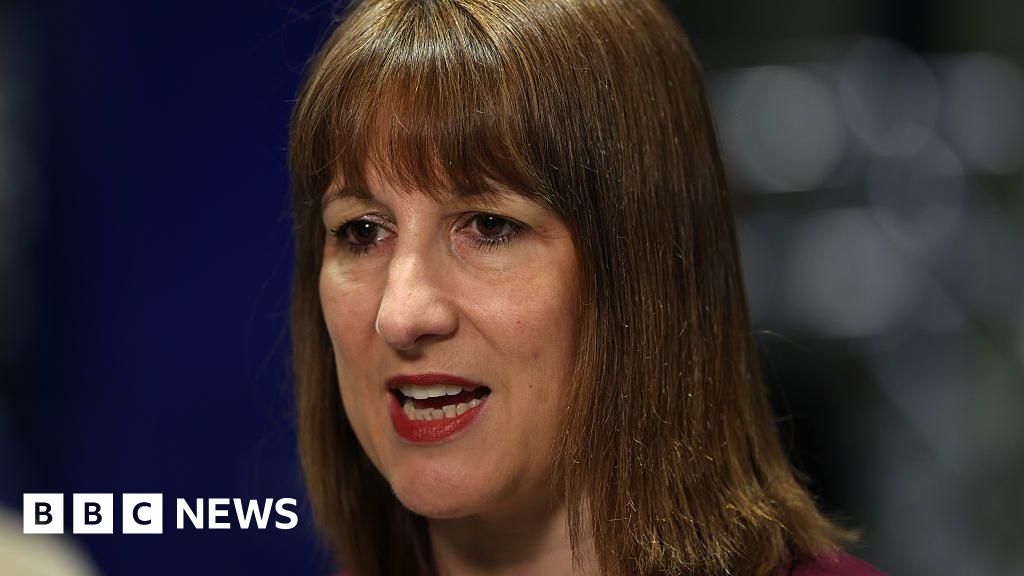Accounting is far past the point where some firms use information technology and others do not. In today’s era, every firm — from the smallest of sole proprietors to the largest international networks — makes extensive use of IT resources in virtually all aspects of their practice.
At the same time, it can be difficult for accountants to evaluate new technology and best manage what they already have.
While this might be easy for firms that have made the specific choice of emphasizing technology in their practice, what of everyone else? How does the average firm decide on a tech stack, weigh investments, and implement proper security while juggling dozens of other priorities?
John Fleischer, senior vice president and chief information officer at Top 25 Firm CBIZ, believes that the answer is contingent on the firm’s overall strategy. Leaders should take a holistic approach to their technology, he said, noting that there is a great deal of interdependence between a firm’s technology and its subsequent activities.
“A lot of these choices really go back to: What is the strategy of your firm? What are you trying to do? Really, the decisions you make need to be referenced back to that so you can figure out what the best choices are to support what we’re trying to achieve from a business standpoint,” he said.
Michael Pynch, technology partner at Top 25 Firm Wipfli, added that it’s not just about what a firm plans to do on a daily basis but what its goals are for the future.
Determining just what kind of firm one wishes to build is a key part of building a larger technology strategy, as it can clarify the direction leaders want to take.
“How far along do we want to get as a firm? Are we trying to keep up? Are we trying to be leaders or fast followers? Where do we want to be in this? And then, breaking it down into the firm’s audit, tax, advisory, consulting, and whatever else you have: Do we want to be leaders in all of them or do we want to be a leader here and a fast follower in other places, and keep up with the Joneses in other spots?” he said.
Best-of-breed vs suites
These broad questions about firm strategy and goals can then inform more specific decisions on technology, such as whether to pursue a best-of-breed approach where firms use a larger number of specialized applications versus a more generalized software suite that contains many solutions within it.
This question is largely a matter of trade-offs between convenience and efficacy, according to Randy Johnston, executive vice president at K-2 Enterprises.
“It is important that firms think about their strategy. Are they going to stick to a single suite approach? … Or are they going to try best-of-breed? Best-of-breed takes more effort to integrate. But you’re likely to get a better result in every category. So you have to understand that there’s some cost to be in best-of-breed, but there may be some productivity gains on that,” he said.
Roman Kepczyk, director of firm technology for Right Networks, said that people had first gravitated toward suites because they were tired of having to manage so many different specialized applications.
After several years of this movement, though, he said many of his own clients are gradually returning to a best-of-breed approach, saying they have been dissatisfied with the array of tools offered in suites.
According to Kepczyk, suites tend to have a few things they do very well, with other features ranging from mediocre to bad. A suite may, for example, be great with document management and data ingress but do poorly on e-signatures and portals. This unevenness, he said, has led more people to return to the best-of-breed approach.
“This year, all of the sudden, I’m getting a bunch of requests for, ‘OK, we’re not happy with the practice management that integrates with the suite.’ … Firms are saying, ‘You know what, we’re going to abandon the pure suite solution and go to what makes the most sense for us,” he said.
Akshay Shrimanker, who leads the Shay CPA, a Queens-based firm that specializes in tech startups, said that his own firm generally takes the best-of-breed approach because he actually found it less expensive, and because he needed a level of cloud integration in his applications beyond what major suites were offering.
However, he didn’t really think of it as necessarily picking a single approach but, rather, using what fit his specific needs. He looks at it more like having a wide set of solutions to approach problems.
“So I’m not sure whether or not they are necessarily ‘best-of-breed’ tools, but we’ve just found that diversifying our toolset has helped,” he said.
Despite this movement, Kepczyk added that all the same problems that the suites were meant to address — namely the inefficiency of managing a huge number of applications that don’t integrate with each other — have not gone away either. Firms are still facing them.
“It’s because we don’t have any better integration. The better integration is not being delivered,” he said.
CBIZ CIO Fleischer raised a similar point, noting that best-of-breed approaches can indeed produce the best solution for the time — but times can change, and so too can the optimal software.
Switching from the old best-of-breed to the new one can then eat up time and money to integrate the new software with the current tech stack and train staff on how to use it. And then a few years pass and the best-of-breed has switched again.
“Oftentimes what happens is people say we’ll pick a solution that happens to have the best features at a certain point in time. My experience has seen … those change. So, [one company] might have a better product this year, next year [another company] may move forward with better features and you move there. That can become a game of jumping around. When you have that, you spend a lot of time and money on integrating them. And you’ve got to train staff on multiple types of systems versus a suite where it’s a consistent look and feel and a lower cost to maintain and operate,” he said.
But he also felt that the whole debate between suites and best-of-breed represented a false dichotomy anyway. He characterized his own approach as “best of suite,” where firms have an optimally configured suite and select the best solutions that integrate with it.
Pynch, the Wipfli technology partner, raised a similar point, saying that smaller and midsized firms should try to use as many things within the same platform or suite as possible. Without this guiding principle, things can quickly get out of hand, with Pynch pointing out that the number of solutions on the market has only increased.
“It’s crazy, the number of software applications that we always had in our industry, especially with audit, tax and consulting. We’ve doubled the number of software applications, if not tripled, in the last three to five years. It’s insane,” he said.
However, Fleischer reiterated that what’s important is fitting the technology to the firm’s long-term strategic goals. Leaders need to consider their whole organization and understand the implications of their decisions on it, whether that means suites, best-of-breed or something else.
Cheap tech vs. no tech
These strategic goals also inform how a firm should evaluate whether or not they can afford to have a certain solution. Some of these software packages can represent a rather significant spend, and not every firm has the budget to immediately get what they want. So firms can sometimes be challenged in determining whether it’s better to get a cheaper substitute in the meanwhile.
On this particular question, opinions were diverse. Shrimanker of Shay CPAs said that so long as the software does what the professional needs it to do, there’s no issue with using cheaper technology.
“Depending on how the company grows and the types of clients you work with … I don’t see any issue in using cheaper technology, especially when it comes to core technology like tax software, the GL, the secure client portal, things that you just need to get things done,” he said.
Donny Shimamoto, the founder and managing director at Intraprise TechKnowlogies, made a similar point but felt that, when it comes to a firm’s core functionality, it’s better to go with the better version versus the cheaper one.
“This depends on the criticality of what you are buying. If it’s more mission-critical, then, to me, [it is] better to wait or find financing to make the purchase. If it’s more of a nice-to-have or non-mission-critical, they might be OK with the cheaper tech,” he said.
On the other hand, Wipfli’s Pynch warned that going for cheap technology can actually be more expensive in the long run. He noted that it takes time and money to integrate a new technology to existing systems and to train staff on how to use it. And then, when the firm finally can afford the technology it actually wanted, all the integration and training that happened before needs to be done all over again.
“So, I would never recommend bad temporary technology because it’s so hard to unwind it, untrain people, and redo all the processes, all the things that are there. I would wait,” he advised.
Similarly, Johnston said that a firm is really better off waiting until leadership can afford what they want versus trying to get by with a cheap substitute. He said, “Life is too short for cheap ice cream,” and similarly, it’s too short for cheap technology. While it’s tempting to want a bargain, he advised firm leaders to consider what it is they’re giving up by doing so.
“My No. 1 driver is reliability. It’s got to work all the time, no matter what. And it has to be as fast as possible. And then I let the price fall where it may. It’s kind of like a three-legged stool. The problem is, if you do cheap tech, do you want to give up reliability or speed? Because generally if you’re buying cheap, you’re usually giving up reliability and you could be giving up speed, too. My take is you’re far better off buying a higher-quality product and you’re more likely to get more life out of a higher-quality product,” he said.
He added that, in his experience, “The most profitable firms spend about 7% of their revenue on technology.” Any less than that, he said, and bottom-line dollars to partners are likely to drop.
Conversely, he said, firms that add more to their budgets tend to see gains up until about the 14% mark, at which point there are diminishing returns.
Shimamoto, though, felt that firms should not be thinking of a unitary technology spend. When considering where technology dollars go, he recommended a three-bucket approach to help clarify a firm’s priorities.
“In my IT budgeting technique, I classify IT spend into ‘Run,’ ‘Optimize,’ and ‘Innovate’ buckets. Run is spend to ‘keep the lights on,’ Optimize are general projects or upgrades to increase efficiency or effectiveness, and then Innovate is spend to create new opportunities or services. Run should always have priority because reducing Run spend can interrupt operations. Then Optimize and Innovate spend should be prioritized based on the business strategy or perceived return,” he said.
Establishing priorities
Regardless of how one prioritizes technology spending, though, it’s important for firms to not get overwhelmed. The average firm has neither the time nor the budget to make a complete root-and-stem transformation of their technology infrastructure in less than a year.
Johnston said that firms can’t really handle more than one major change at a time, and so should carefully select which projects have priority.
“Normally, you don’t want to tackle much more than about one project a year in a typical firm. Otherwise, your firm will suffer from software exhaustion. They just can’t really take the change that much. When I’m picking my priorities, I try to pick the things that are causing the most time waste, the most difficulty, and I try to find solutions in those categories and implement those next,” he said.
Pynch raised a similar point, saying that firms can get stuck trying to spin up too many different projects and spreading themselves too thin.
“Just pick one or two things and nail it completely and get the training manuals in place and get the education system in there and get the policies and procedures for this change written,” he said.
CBIZ’s Fleischer largely agreed, though he believed that firms might be able to handle two to three major projects in a year. Still, he said, it’s important to consider not just the initial cost of new technology but the overall time commitment to support the technology long-term.
“Every time we implement a new system or technology, there’s generally some cost associated with maintaining it. Sometimes it’s a people cost, sometimes it’s a hard-dollar cost. So you’re talking about where you’re spending your money, I think the thing that especially the midsized firms need to really make sure they’re doing is allocate the dollars first to maintain what you already have,” he said.
The intangible factors
This speaks to the wider point that beyond the technology itself is the human element that is essential if firms expect to get any use from their technology investments. Fleischer said it’s important for a firm to have what is functionally a technology champion who takes responsibility for the tech stack as the firm grows.
“You’d want to get someone in there who’s really passionate about technology and also understanding what’s important from a business standpoint, [who considers] what do you need to be successful as a firm and when really to look at it as a tech stack,” he said.
Kepczyk of Right Networks, too, stressed the importance of having technology that people are passionate about, and people who are passionate about technology.
These factors will go far in helping staff adapt to changes. Conversely, if people aren’t enthusiastic, implementation will be much more difficult.
“When you have a specific need for a small number of people… they have a vested interest to use that [technology] and they’ll learn it. But I’ve seen firms try to roll out a [solution] for the entire firm and it fails because the other people aren’t invested in it,” he said.
Pynch said that firms need the right technology governance as well, particularly as they grow larger. A firm with great technology can still be brought low by people doing things like using nonstandard software, using firm technology in ways they shouldn’t, or being able to access things they shouldn’t.
He noted there are many different ways to establish oversight and governance, each with their own strengths and weaknesses. Regardless of how it is done, though, the important thing is to make sure it is done in the first place.
“If you can’t get business-side governance over the business side, over people in the firm and what they’re doing, you can’t really control the tech stack. … Whatever the governance is, if it’s an IT steering committee, if it’s an IT person who reports to the managing partner, or whatever, having that there aligns with knowing the strategies and what we’re actually trying to accomplish,” he said.
He added that, when considering the question of what firms want to accomplish, they should be ambitious. A firm that decides it wants to basically just exist with all its clients within a 90-minute drive can probably do so with minimal technology investment. But, he asked, is that really the height of the firm’s ambition?
“Is that all you want to be? … Are you really just chasing the next 15 minutes’ worth of clients outside the hour-and-a-half ring around your area? Or are you going, ‘Wait a second, maybe I should be targeting these banks or these health care organizations or whatever?’ It comes back to optimization. How do I optimize what I’m going to do?” he said. AT
Credit: Source link











